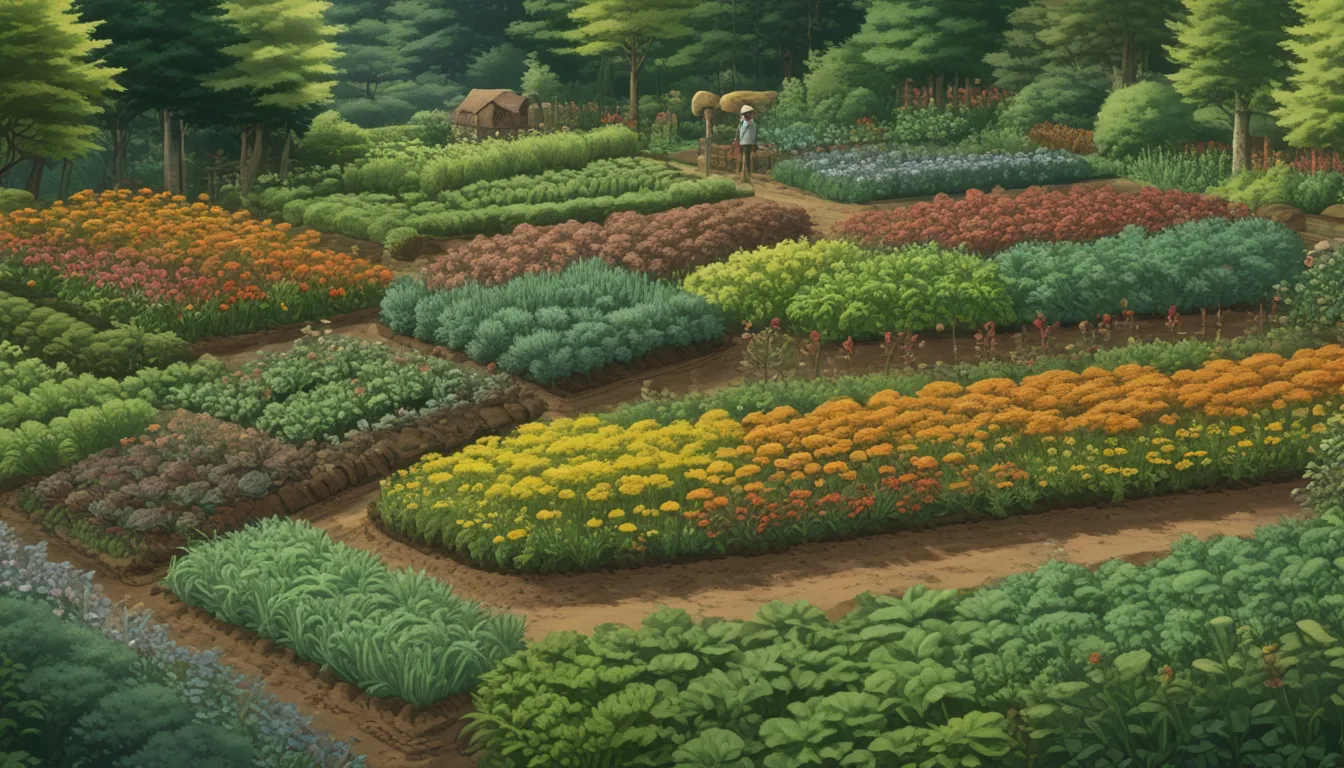How to Use Succession Planting to Achieve a Continuous Harvest in Your Garden

Are you tired of the short-lived joy of harvest season in your garden? Do you want to find a way to make your garden produce more for longer? If so, you’re in luck! Succession planting is an effective method that can help you achieve a continual harvest all season long.
What is Succession Planting?
Succession planting is the practice of staggering the propagation of crops to ensure a continuous supply and extend the harvest season. By utilizing this method, you can enjoy repeated harvests of your favorite veggies from spring through fall.
Why Should You Try Succession Planting?
If you’re wondering whether succession planting is worth the effort, here are some reasons to give it a try:
- Fresh produce all season long without the need for processing and storing a large single harvest.
- Maximizing space in your garden.
- Extending your growing season.
- Minimizing the risk of crop loss due to weather, pests, or disease.
- Maintaining a continuous supply of fresh veggies.
- Maximizing yields.
The benefits of succession planting are numerous, making it a win-win for any gardener willing to put in the effort.
Methods of Succession Planting
Succession planting involves several different approaches, including:
1. Same Crop, Staggered Plantings
This method consists of planting the same species or cultivars recurrently over the season. It works well for plants that have initial heavy yields but slow down production over time. By staggering plantings every few weeks, you can enjoy continuous harvests throughout the season.
2. Different Plants, Same Space
Utilizing the same garden space to grow different crops in succession is another method of succession planting. By composting plants after their prime and replanting with new crops, you can maximize the use of your garden space.
3. Intercropping
Intercropping involves planting multiple species in the same space. By combining plants with different growth rates and spatial needs, you can make the most of your garden space and promote plant health.
4. Same Plants, Multiple Varieties
Growing early, mid-season, and late-season varieties of the same crop can help you extend your harvest and provide variety in flavor and appearance. It also reduces the risk of losing an entire crop due to unforeseen factors.
Extend the Season with Succession Planting
Succession planting can help you extend the growing season by producing larger yields throughout the summer and even into fall and winter. By using season extension techniques such as cold frames, mulching, or greenhouses, you can continue planting longer into the fall.
Square Foot Gardening with Succession Planting
If you have limited space, combining succession planting with square foot gardening can help you maximize space and variety of crops. By dividing a raised bed into sections and planting different crops in each one, you can enjoy a continual harvest from a small area.
Create a Clear Plan for Succession Planting
To successfully implement succession planting, it’s essential to have a clear plan in place. Consider the following questions when planning your garden:
- How long is your growing season?
- What crops do you want to grow?
- How much space do each of them need?
- How long does each crop take to produce food?
By answering these questions and creating a garden layout based on your answers, you can effectively plan your succession plantings. Use a garden planner or calendar to track your planting dates and crop rotations.
Succession Planting Reference Chart
Refer to the following chart to guide you in your succession planting planning:
Sow every 1-2 weeks
- Salad mix
- Radishes
- Spinach
- Baby lettuce
- Bok choy
- Lettuce (full heads)
- Peas
- Bush beans
Sow every 2 weeks
- Arugula
- Turnips
- Beets
- Corn
- Rutabaga
Sow every 3-4 weeks
- Carrots
- Cucumbers
- Kale
- Collard greens
- Melons
Sow every 4-6 weeks
- Summer squash
- Swiss chard
If you find this chart overwhelming, remember the basic rule: once you harvest a crop, pull it up, compost it, and plant something new in its place.
Tips and Tricks for Succession Planting
To avoid overtaxing your soil with succession planting, follow these tips:
- Amend with organic material between plantings to replenish nutrients.
- Mulch heavily to retain moisture and protect the soil.
- Rotate crops to prevent nutrient depletion and disease.
- Leave beds fallow occasionally and seed with cover crops.
Additionally, keep records of your plantings, start transplants in advance, and select quick-maturing varieties to maximize your harvests.
Is Succession Planting Worth the Effort?
While succession planting may require some planning and effort, the benefits of continuous harvests make it a worthwhile endeavor. By strategizing your plantings and utilizing different methods of succession planting, you can enjoy fresh produce from your garden all season long.
So, why not give succession planting a try in your garden? Who knows, you might just find yourself with a bountiful harvest that lasts well into the fall and winter months!
Do you have experience with succession planting? Share your tips and tricks for achieving a continual harvest in the comments below!
For more gardening tips and advice, check out our other popular guides:
- Why & How You Should Lime Your Lawn and Garden
- Bone Meal: Friend or Foe? Learn How to Use It in Your Garden
- 15 of the Best Cover Crops for the Home Garden
- What Every Gardener Should Know about Peat Moss (Plus 5 Alternatives)





